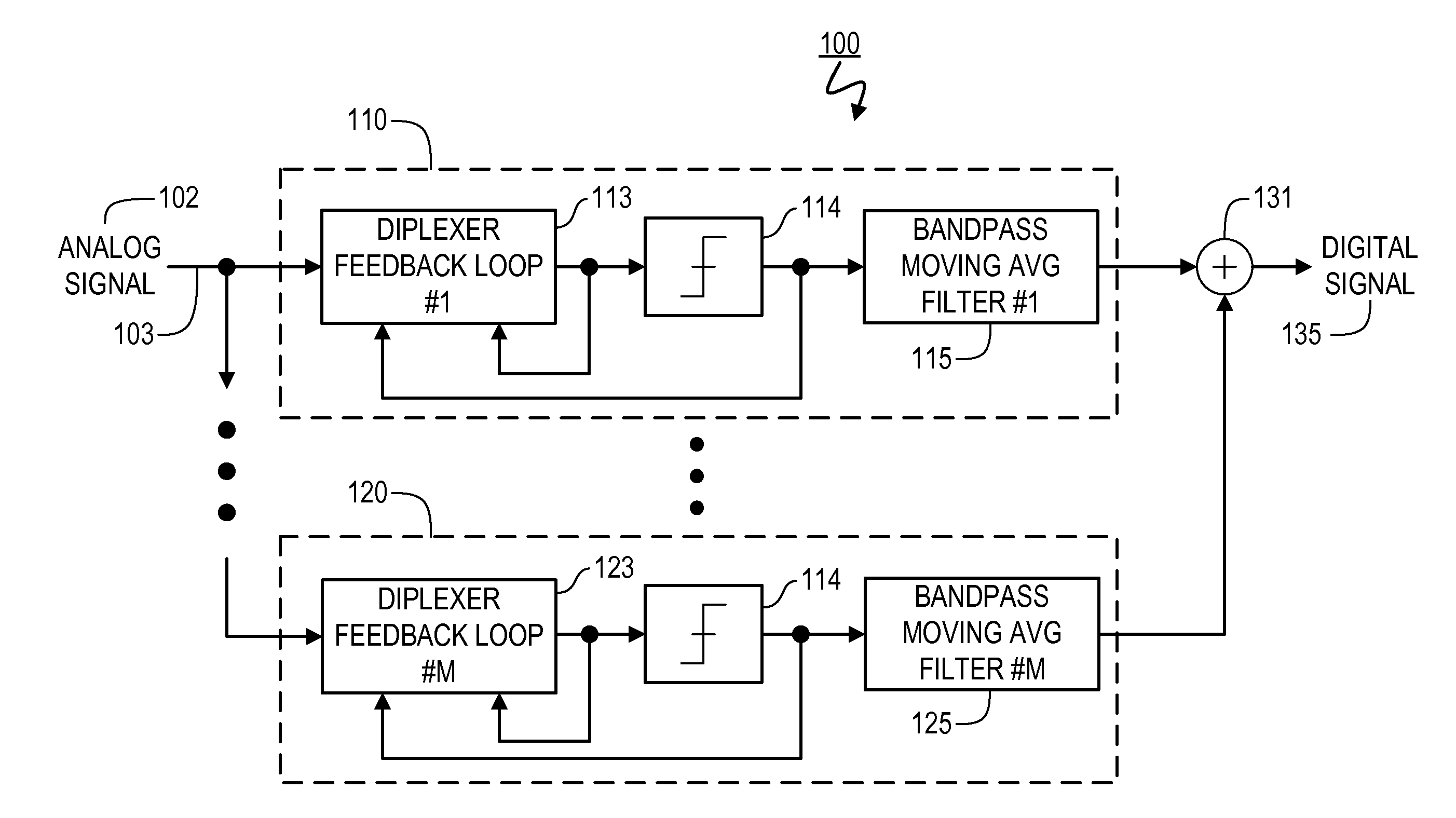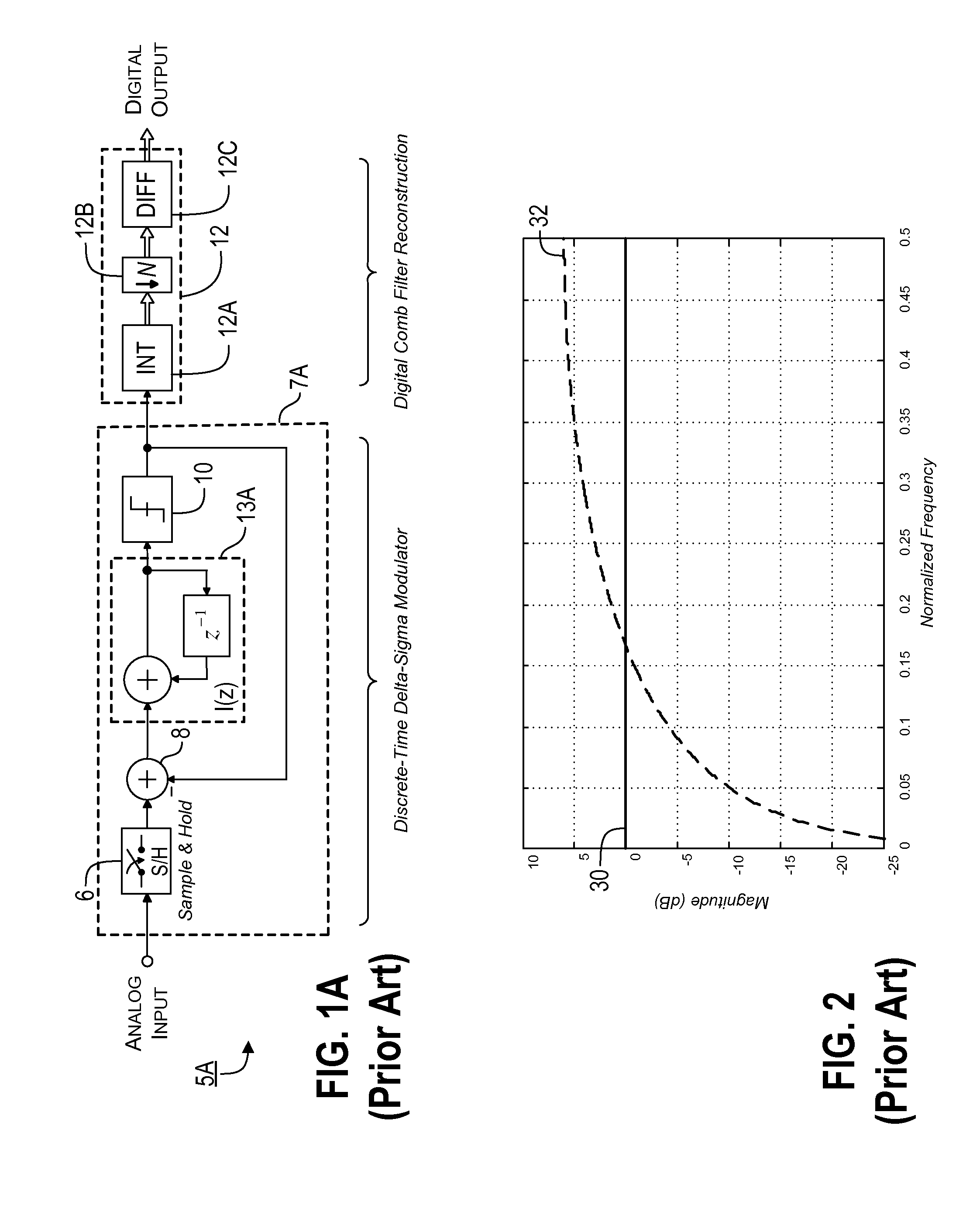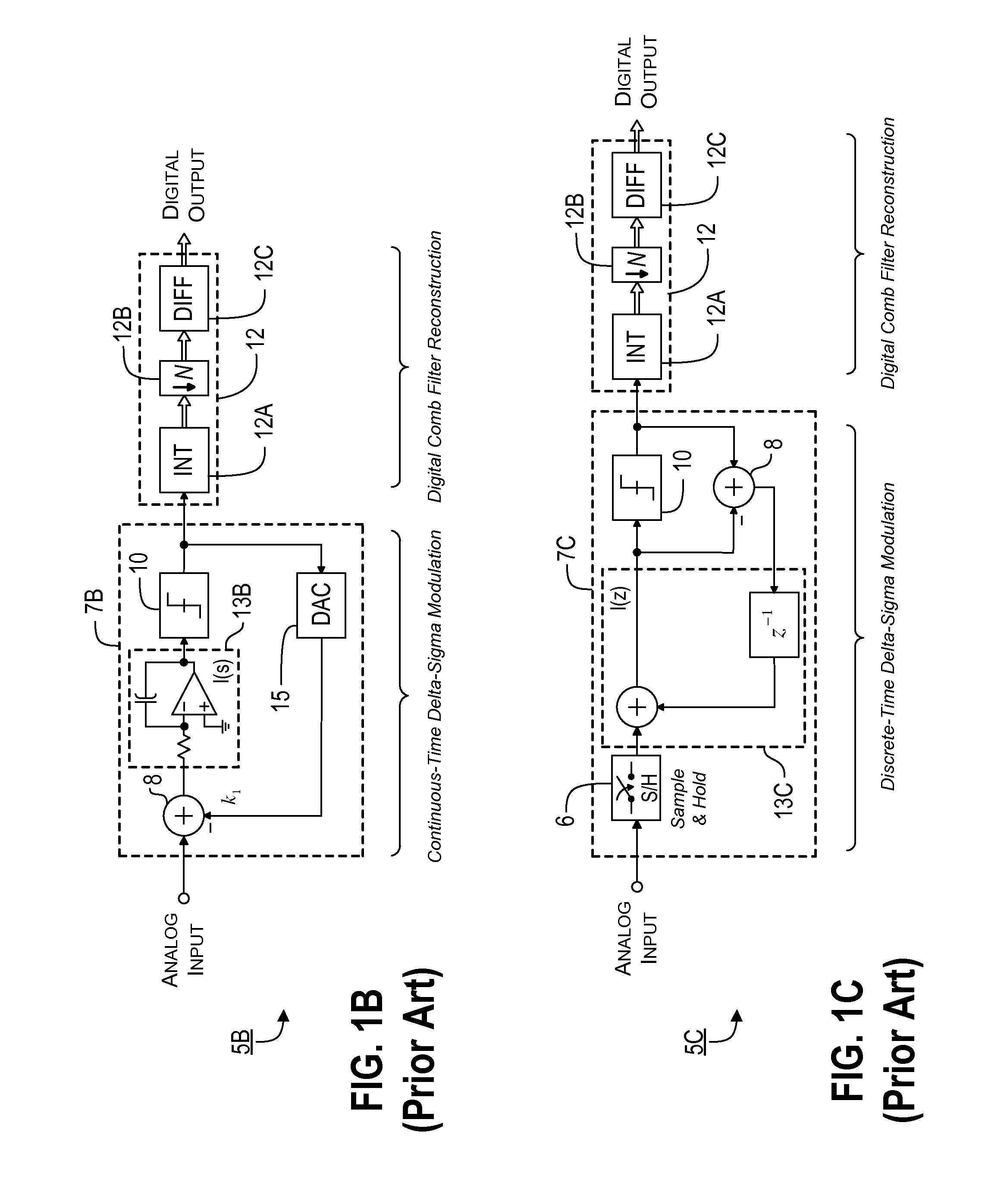Sampling/Quantization Converters
a technology of sampling/quantization converters and converters, applied in the direction of digital-analog converters, physical parameters compensation/prevention, instruments, etc., to achieve the effects of wide bandwidth, improved combination, and high resolution
- Summary
- Abstract
- Description
- Claims
- Application Information
AI Technical Summary
Benefits of technology
Problems solved by technology
Method used
Image
Examples
Embodiment Construction
n; FIGS. 14C-E are block diagrams illustrating representative forms of recursive moving average prototype filters for BMA signal reconstruction; and FIG. 14F is a simplified block diagram of a multirate, recursive moving average filter having a polyphase decomposition factor of m=4.
[0036]FIG. 15A illustrates frequency responses of a Bandpass Moving Average signal reconstruction filter bank used in a MBO converter according to a representative embodiment of the present invention; and FIG. 15B illustrates the frequency responses of a conventional signal reconstruction FIR filter bank based on a Kaiser window function.
[0037]FIG. 16 is a block diagram of a complete MBO converter according to a representative embodiment of the present invention, which incorporates multiple Diplexer Feedback Loop (DFL) noise shaping circuits in conjunction with a Bandpass Moving Average (BMA) filter bank for signal reconstruction.
[0038]FIG. 17 is a block diagram of a complete MBO converter according to a ...
PUM
 Login to View More
Login to View More Abstract
Description
Claims
Application Information
 Login to View More
Login to View More - R&D
- Intellectual Property
- Life Sciences
- Materials
- Tech Scout
- Unparalleled Data Quality
- Higher Quality Content
- 60% Fewer Hallucinations
Browse by: Latest US Patents, China's latest patents, Technical Efficacy Thesaurus, Application Domain, Technology Topic, Popular Technical Reports.
© 2025 PatSnap. All rights reserved.Legal|Privacy policy|Modern Slavery Act Transparency Statement|Sitemap|About US| Contact US: help@patsnap.com



